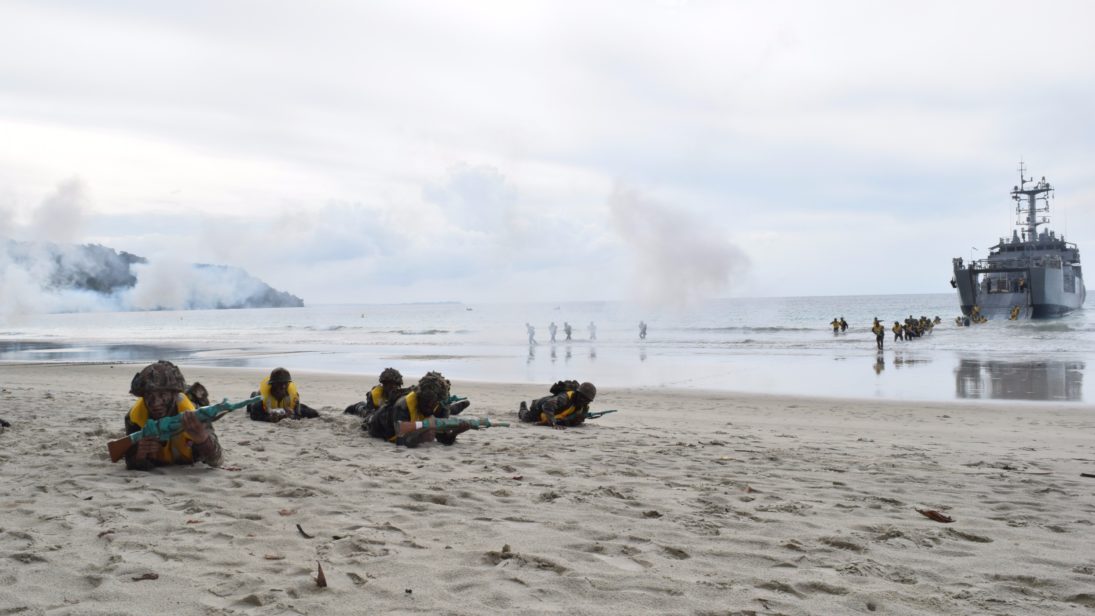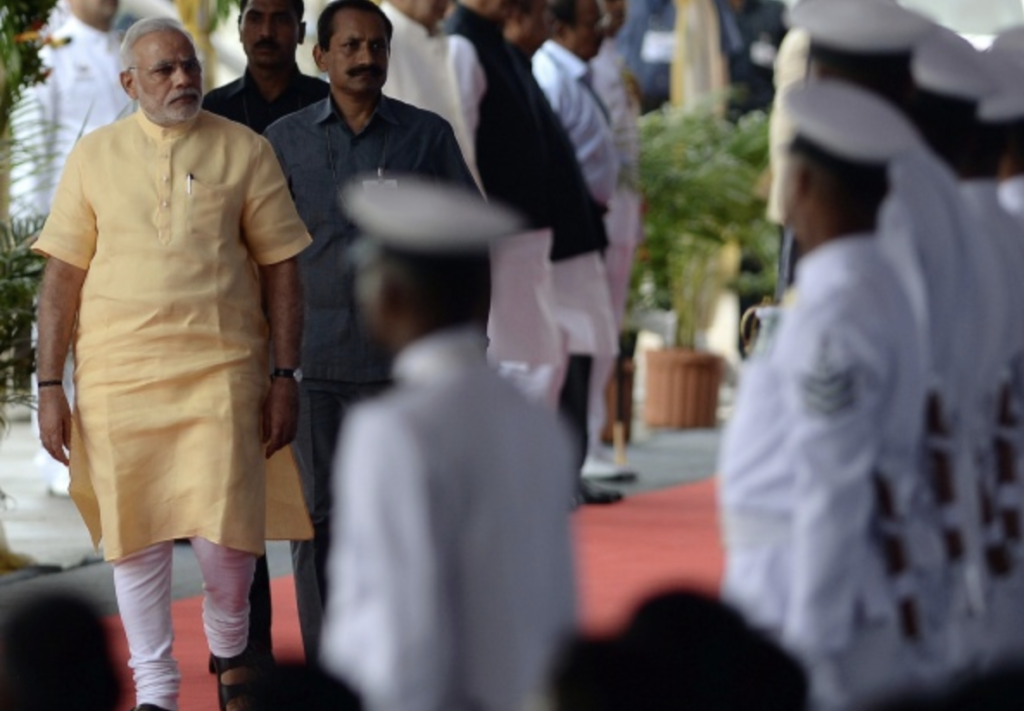
In his speech at the Shangri-La Dialogue 2018, Indian Prime Minister Narendra Modi detailed India’s aspiration to cultivate an “open, stable, secure and prosperous Indo-Pacific” to keep this global commons free from threats such that all could take advantage of its economic opportunities. This approach to maritime security is in line with India’s burgeoning economic growth: with its expanding economic partnerships in Southeast Asia and the fact that the Strait of Malacca is one of India’s most important trade routes, India’s policy thrusts in the Indian Ocean Region (IOR) have tended towards its east. Accordingly, the Andaman Sea has gained prominence in India’s efforts as it joins the Bay Bengal with the wider waters of the Indo-Pacific through the Strait of Malacca. It is also traversed by important shipping routes that are used to transport a significant portion of the world’s energy trade. Moreover, China’s ingress into the IOR and India-China maritime competition also necessitates that India realize the strategic value of these waters. Thus, the Andaman Sea is poised as a geostrategic gateway to important sea lanes of communication through which India can extend its reach further into the eastern Indo-Pacific.
Yet given the Andaman Sea’s function as a gateway, other powers couldsimultaneously make inroads into India’s immediate waters through it. These circumstancesin the Andaman Sea have created a unique strategic scenario whereby India’sattempts to gain prominence in the Indo-Pacific through collaborative growthmust be coupled with efforts to ensure security in the region. Accordingly, Indiahas begun to enhance the capacity of the Indian Andaman and Nicobar Tri-Command(ANC), the military command responsible for maintaining order in this maritimespace, through various measures. This piece seeks to evaluate such Indianinitiatives and understand how far the potential of the Andaman Sea has been realized.
Harnessing the Andaman Sea’sStrategic Value: Current Initiatives
Much of the Andaman Sea’s potential as a geostrategic gateway is owed to the Andaman and Nicobar Islands located to its west. Often referred to as “one of the most strategically located island chains of the world,” the ANI straddle the Ten and Six Degree Channels, important shipping routes for India’s commercial interests. The ANC is vested with the responsibility to monitor vessels passing through these channels and guarantee freedom of navigation through the Malacca, Sunda, and Lombok Straits. In this regard, ANC’s patrols have now assumed greater significance as a part of India’s initiatives to maintain freedom of navigation in the Indo-Pacific. This is in tune with the vision of other major Indo-Pacific powers such as the United States, Japan, and Australia, which have encouraged India’s collaboration as a regional partner to maintain a “Free and Open Indo-Pacific.”
As China tries to attain greater presence in the IOR through varied initiatives like developing the Chittagong Port in Bangladesh, selling submarines to Thailand, and trying to materialize the Kra Canal due to its “Malacca Dilemma,” India has recognized the Andaman Sea’s vulnerability to such developments. The government has thus sought to increase the defense capacity of the ANC as has never been seen before.
New Delhi has virtually finalized a USD $820 million, 10 year-long plan to create facilities for additional troops and military assets in the islands. Car Nicobar and Campbell Bay have also been identified as potential Indian Air Force fighter bases. These recent developments build on initiatives over the last two years to enhance the capability of the ANC–last year, a Joint Logistics Node was established to enhance the logistical coordination between the three armed services within the ANC and in January 2017, India carried out the Defence of Andaman and Nicobar Islands Exercise (DANX-17), which included amphibious assault landings, reflecting the building of offensive as well as defensive capabilities near the Andaman Sea. Earlier this year, the Indian Navy commissioned its third base INS Kohassa at the Naval Air Station (NAS) Shibpur (a prime strategic asset due to its proximity to Myanmar’s Coco Islands, where China is supposed to have a facility to monitor Indian missile launches into the Bay of Bengal). It is noteworthy that the NAS also undertakes Humanitarian Aid and Disaster Relief (HADR) missions in nearby countries. Enhancing the capacity of a NAS with such layered responsibilities is indicative of how India’s vision of ensuring collective security in the Indo-Pacific is unfolding.

Apart from improving its own capabilities and mechanisms, the ANC has also staged several bilateral and multilateral naval exercises with the Southeast Asian littoral countries to jointly address common threats. These include the CORPAT Exercises with the navies of Thailand, Myanmar, and Indonesia and the Singapore-India Maritime Bilateral Exercise2018, all carried out in and around Andaman Sea. Talks are additionally underway for a tri-lateral naval exercise involving India and the Andaman Sea littoral countries, i.e. Thailand and Singapore. ANC’s flagship multilateral naval exercise MILAN conducted in the Andaman Sea attracted wide participation in 2018, spanning sixteen countries in the Indo-Pacific; Kenya, Oman, Tanzania, Mauritius, Maldives, Sri Lanka, Bangladesh, Myanmar, Thailand, Malaysia, Singapore, Indonesia, Cambodia, Vietnam, and Australia. While this is evidence of the command’s growing prowess, it also sheds light on the strategic significance of the Andaman Sea.
The MILAN Exercise also has a segment devoted to cultivating disaster management between participating navies. This is significant as HADR is a part of India’s vision of shared security in the Indo-Pacific as natural disasters are trans-national security threats. The Andaman Sea being a common maritime space, and given its vulnerability to natural disasters, offers India the scope of developing collective disaster management with the ASEAN countries—in fact, the ANC provided HADR to Myanmar during Cyclone Nargis in 2008. The proximity of the ANI to these countries gives India an advantage in cultivating this collaboration. In that regard, the ANC has inducted the third ship of the Landing Craft Utility (LCU) class and also keeps in readiness HADR bricks (comprising of disaster relief essentials).
Limitations and Hurdles
After years of isolation, India has undertaken several initiatives to reacquire its prominent position in the Andaman Sea. Given its potential as a geostrategic gateway through which inroads can be made into the country’s immediate waters, India has sought to enhance the ANC’s defense capacity to strengthen its foothold in this maritime space. At the same time, because the Andaman Sea is poised to be the stepping stone through which India can also extend its influence beyond the Malacca Strait, the ANC has entered into a number of joint exercises to maintain collective security in these waters. However, one problem is that the Command’s primary operations continue to be focused on handling non-traditional security threats and its focus is yet to be fully expanded to sea control or sea denial priorities. Moreover, it is yet to be allocated sufficient resources to develop as a forward base. In addition, the Maritime Domain Awareness potential of the ANC also remains underutilized. If developed, it will provide India the advantage of observing submarine activities in the Malacca Straits, which has gained significance after sightings of Chinese naval submarines near the ANI. India needs to take advantage of this strategic moment and hasten its endeavors in the Andaman Sea if it has to utilize its potential as a geostrategic gateway.
***
Image 1: SpokespersonNavy via Twitter
Image 2: Punit Pranjpe via Getty


